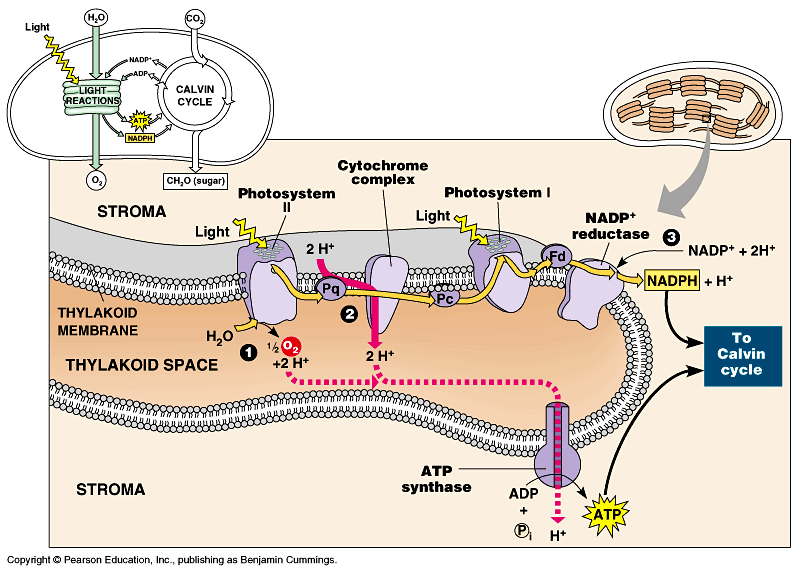|
|
 |
|
Light - Dependent Reactions
|
 |
|
The light-dependent reactions (light reactions) occur in the thylakoid membranes of the
chloroplasts and use light energy to synthesize ATP and NADPH. The products of the light reactions are ATP from photophosphorylation
and NADPH from photoreduction. Both are used as an energy source for the light independent.
In the first stage, the light reactions , light energy is
absorbed from the sun and converted to chemical energy, which is stored temporarily in ATP and NADPH. Light absorbed by chlorophyll
or other pigments is used to drive a transfer of electrons and hydrogen from water to an acceptor called NADP+, reducing it
to NADPH by adding a pair of electrons and a single proton (hydrogen nucleus). The water is split in the process, producing
waste oxygen.

|
 |
|
|
 |
|
|
 |
|
|
|
|
Converting Light Energy To Chemical Energy
First, photons are captured in the antenna complex of photosystem I and
II. Then, light energy forces electrons to enter a higher energy level in the two chlorophyll a molecules of photosystem II
(electrons are said to be excited). The acceptor of the electrons lost from chlorophyll a is a membrane in the thylakoid membrane
called the primary electron acceptor. This process happens through photoinduced charge separation. Then the primary electron
acceptor donates the electrons to the first of a series of molecules located in the thylakoid membrane called an electron
transport chain that primarily functions to generate chemiosmotic potential across the membrane (Z-scheme). Next, an ATP synthase
uses this chemiosmotic potential to make ATP during photophosphorylation, while NADPH is the product of the terminal redox
reaction in the Z-scheme. Light is then absorbed by photosystem I and NADP+ is reduced to NADPH.
 

|
|
|
 |

